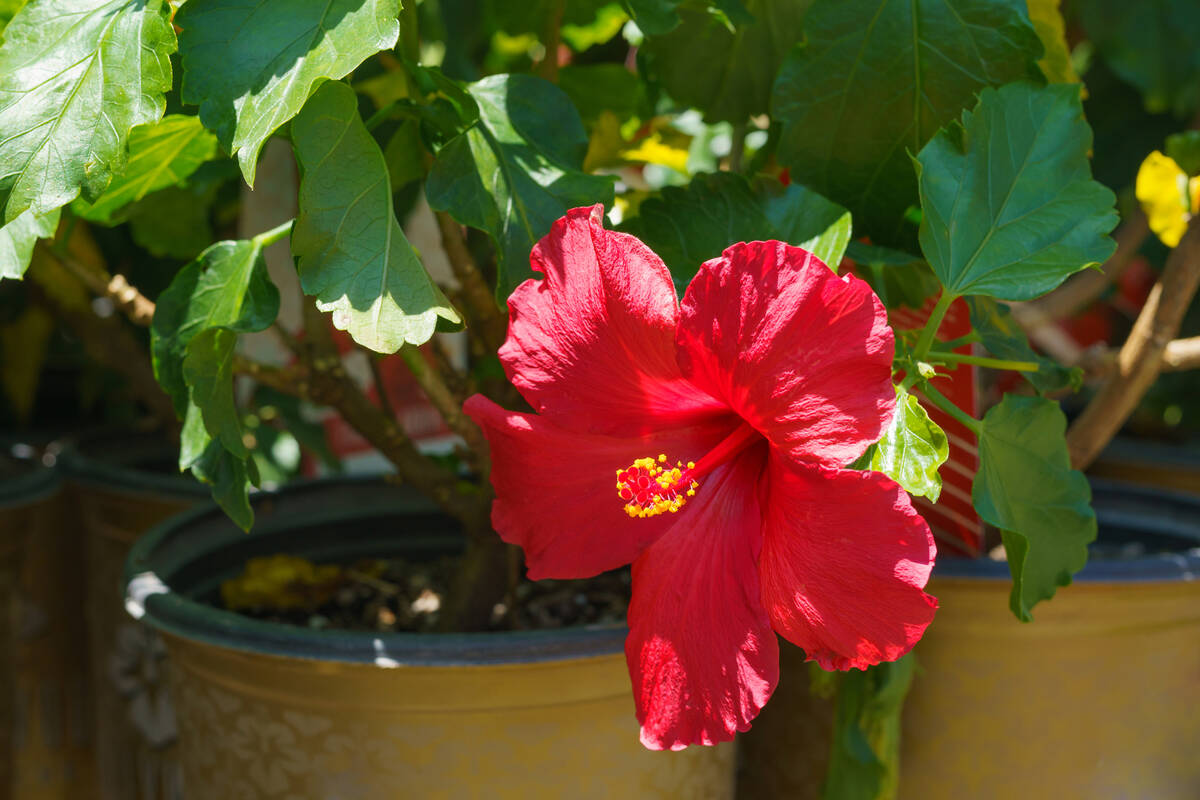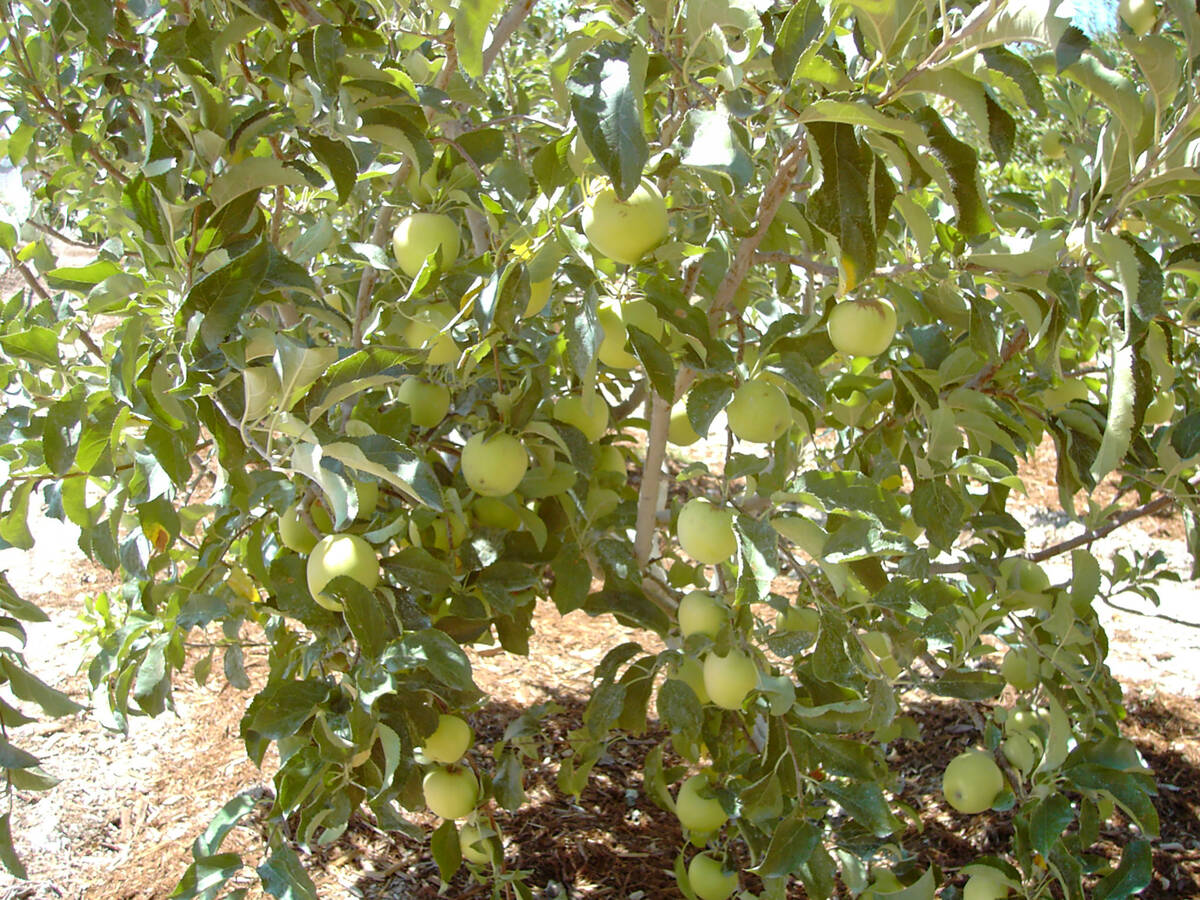The sun sets on my days as RJ’s gardening columnist
I want to thank all of you who have supported my journey into journalism by reading my column over the years and contributing questions for me to try to answer. I have decided that this will be my final article for the Las Vegas Review-Journal.
You can still access my gardening blog at xtremehorticulture.blogspot.com and submit questions to xtremehorticulture@gmail.com. I will check my emails regularly — but not every day!
Q: We have a number of hibiscuses that we planted last spring, and they have been doing really well and even blooming up until a few weeks ago. Then we got the cold that dipped below freezing in my area. Some of them turned blackish green on most branches. Some of them didn’t.
We noticed that the red ones (San Diego Red) seemed to fare better than the pink ones (Lipstick). They are right next to one another. After the damage, we covered them until the temperatures got back up to the low 40s.
Is there a reason why the red fared better than the pinks, and what steps should we take at this point? Prune? Leave alone?
A: The cultivars of hibiscus range from winter cold-hardy cultivated varieties to the warm or hot tropical varieties. They vary within these temperature extremes, as well as in flower color and size. Hibiscuses have beautiful large flowers that are favorable to consumers and easy to breed.
One of the world’s largest breeding programs of hibiscus exists at Texas A&M University’s Vernon campus, near the Panhandle and the Oklahoma border. Its focus is to produce varieties of hibiscus for the nursery trade that will handle the different climates in Texas and other similar climates. I would suggest that you look for varieties out of that program that will survive winter temperatures common to Dallas.
In either case, prune them when growth returns, but only in the spring to avoid cold weather and possible further damage from the cold of winter.
The San Diego Red hibiscus is a tropical plant that produces bright red flowers and can grow to be 8 to 12 feet tall and 6 to 8 feet wide. Because it is mesic, water it deeply and regularly, but allow the soil to dry out between waterings. Basin or flood irrigation can help prevent salt from building up around the roots.
Removing old blooms also helps the plant grow more flowers when it is old enough to produce.
Q: I planted a young apple tree (15-gallon container), but unfortunately it died. I bought some wood chip mulch from that nursery in hopes it would improve drainage.
After it died, I dug down at least a couple of feet to break through the caliche I found near the soil surface. When we dug out the old tree (which probably died of root rot), about 2 feet down there was standing water. It was just wet mush, not soil.
I put burlap over the base of the tree to try to save it from being overwatered. It should substantially reduce the water going to its roots from the soil above, but it’s not very aesthetic.
I would be happy to hear whatever suggestions you have for trees and lawn cohabitating with caliche.
A: You have three options, I think. One option is not to do anything.
It is difficult to find a balance between how much water to give your tree and giving it too much. Too much water and you get what you had: a sopping wet soil and then a tree with root rot. That balance, how much water to give a tree, is difficult to find.
Another option is to remove the hardpan or caliche layer. In my opinion that is your best option. It may be thick or thin. You don’t know at this point. Usually, there is just one layer of caliche or hardpan.
There is a third option for trees and the threat from overwatering: Build the soil up rather than keep it at the same level. You can mound the soil on top of your existing soil for smaller fruit trees like a grafted apple.
This would require building a mound of amended soil to a minimum of 6 feet across and at least 18 inches deep. Most fruit trees need a minimum of 18 inches of decent soil for rooting.
Mounding the soil like this allows for some drainage as well. It will cost money and time, but that may be the answer to your overwatering problem. Eventually the caliche will dissolve away. The length of time depends on how thick the caliche is.
Q: I put an orange tree in a container about two years ago. The tree was patio-sized, according to the nursery that sold it. This past winter and spring all the fruit was blown during some windy weather. When can I expect some fruit?
A: I think protecting a small tree from winter cold is a good idea — i.e., moving it out of windy locations right after the flowers form and fruit sets. Too much pampering can cause problems, though. The fruit tree must survive in that location, eventually.
Fruit drop on young trees is normal. After about the second or third year of fruit drop, the tree will usually try to produce a few fruit.
Thinning the fruit is an important step. It makes for larger fruit. I would suggest continuing to thin but keeping a few to taste. I have never been one to eliminate all of the fruit. Every year it succeeds in producing some fruit, it gets bigger. The mother plant wants to get some size before any fruit is supported.
Growing citrus in containers can be a little bit of a problem if the soil cycles from wet to dry to wet to dry. When a fruit tree is in production (fruit formation to harvest) is very important to keep the soil moist. After harvest is the time to save water.
Moisture management of the soil in containers can be a bit tricky. If you are using an automatic irrigation system, check the soil for moisture during windy times. Buy an inexpensive moisture meter for houseplants to help you know when to water. That will give you a general idea whether the soil is moist.
Bob Morris is a horticulture expert and professor emeritus of UNLV.


















